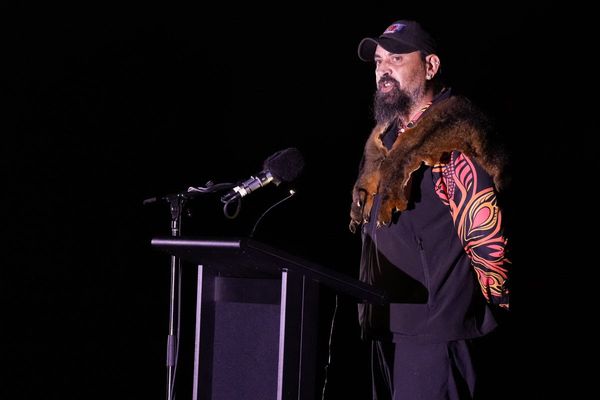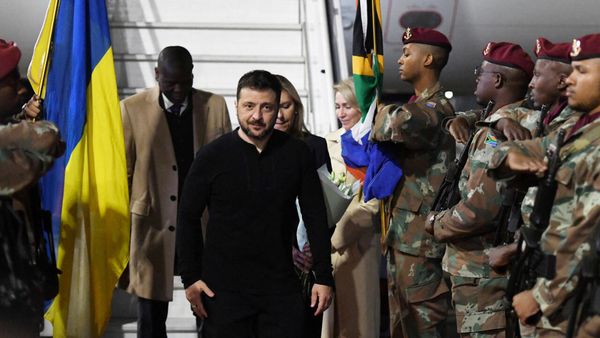
Anne Zahalka’s multimedia works depicting Australian wildlife and landscapes are eye-catching, intriguing and sometimes unsettling. As one of the guests of honour at La Gacilly Photo Festival in Brittany, she presents her native land in a new light to help visitors understand the dangers it faces from climate change and human activity.
The leafy streets and gardens of the picturesque village of La Gacilly in western France are home to an annual outdoor photography festival that focuses on the environment and social issues.
This year Australia is the country of honour, with featured work from 11 Australian photographers, including Anne Zahalka.
In her exhibition “Fragments of Wild Life”, koalas cling to spindly eucalyptus trees as a fire rages below. Emus prowl in a desert lined with wind turbines and birds land on pebbly beaches to scoop up plastic lids that look suspiciously like tiny crabs.
Merging scientific research with art, Zahalka tackles disturbing environmental issues with subtlety and sometimes humour.
Many of the works on display in La Gacilly come from her project “Future Past Present Tense”, which draws attention to drastic changes in the environment and humankind’s role in its deterioration or conservation.

One of the images shows Macquarie Island, halfway between Australia and Antarctica, where spaceship-like pods have landed to shelter researchers.
Zahalka explains that great care has been taken by scientists to leave as little trace as possible. But the irony is that in the foreground, the beach is littered with bits of plastic.
“It continues to be very disturbing,” she tells RFI. “Birds are flying and eating these plastics. It is one of the environmental disasters that is unfolding and it’s really hard to prevent it. I mean, there is action but it’s too slow.”
Frozen in time
Zahalka’s work involves transforming photographs from historical archives, taking inspiration from dioramas.
Popular in museums in the late 19th century, these 3D habitat displays generally featured a panoramic painting as a backdrop, decorated with taxidermied animals, artificial plants and other objects in the foreground in an attempt to recreate an authentic scene.

“I reinvent them to depict a vision of the future that is simultaneously apocalyptic and utopian,” Zahalka says.
She also incorporates pictures of the scientists who created the original dioramas and digitally alters images to show how the environment has changed since their day.
What is tomorrow made of? Artists probe consumerist society and planetary crisis
Dioramas have fallen by the wayside now, she says, as people questioned the use of stuffed animals and the amount of time needed to make them.
“I think they were incredibly beautiful things and my work is a lament for both the lost landscapes, lost creatures and also a lost art,” she explains.

Positive ecology
Festival curator Cyril Drouhet says focusing on Australia was evident when it came to drawing the public’s attention to climate change.
“It’s a place often idealised for its pristine, unspoiled expanses,” he says in his introductory notes.
Australian photographer celebrates indigenous heritage at French festival
“But behind the clichés of exoticism surrounding this country in Oceania lies a reality that we are unaware of and that only artists can truly capture,” he goes on, pointing to Australia’s “unambitious climate policy” and the tragic record of droughts, fires and coral bleaching.
Despite the urgency of the message, Drouhet insists that the festival’s goal is to find beauty amid the world’s crises. “We are in favour of a positive ecology, not a punitive ecology,” he told RFI.
“We are not here to say that everything we do is wrong. We’re trying to make people understand.”
La Gacilly Photo Festival runs until 3 November 2024.







